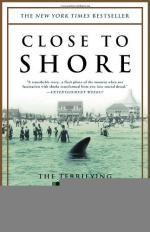
|
| Name: _________________________ | Period: ___________________ |
This quiz consists of 5 multiple choice and 5 short answer questions through Chapters 3 and 4.
Multiple Choice Questions
1. Who does the boy miss at the beginning of the book?
(a) His sister.
(b) His brother.
(c) His fiancee.
(d) His mother.
2. What were women doing that was scandalous to many?
(a) They were going on dates.
(b) They were not enjoying the beach environment.
(c) They were exposing their arms and legs and wearing scandalous clinging wool suits.
(d) They were talking to boys.
3. The editorial ended with what conclusion?
(a) Sharks did present a significant danger to man.
(b) Sharks did not present a danger to man.
(c) Sharks did present a slight danger to man.
(d) Man did present a danger to sharks.
4. On board were the architect Stanford White, New York Sun publisher Charles Dana, and close friend ___________________.
(a) Theodore Roosevelt.
(b) Andrew Carnegie.
(c) Franklin Delano Roosevelt.
(d) J.P. Morgan.
5. This editorial cited the fact that twenty-five years had passed since Oelrichs' swim with the sharks and _____ evidence had come forth of a shark attacking a man.
(a) A great deal of.
(b) Some.
(c) No.
(d) Very little.
Short Answer Questions
1. The great white, even in modern times, remains what?
2. Successive rows of additional teeth are poised behind the functional teeth, ready to replace them when they are discarded. Every ______________ weeks, a new, serrated set of teeth replaces the current set.
3. A sense of ___________________ is felt by the end of the first chapter.
4. Though young sharks can seem slow-moving, when stimulated they can reach speeds of ____________ miles per hour.
5. Mrs. Vansant was somewhat concerned about the possible ruckus on the Jersey Shore due to the hordes of visitors expected and a controversy over what?
|
This section contains 325 words (approx. 2 pages at 300 words per page) |

|




